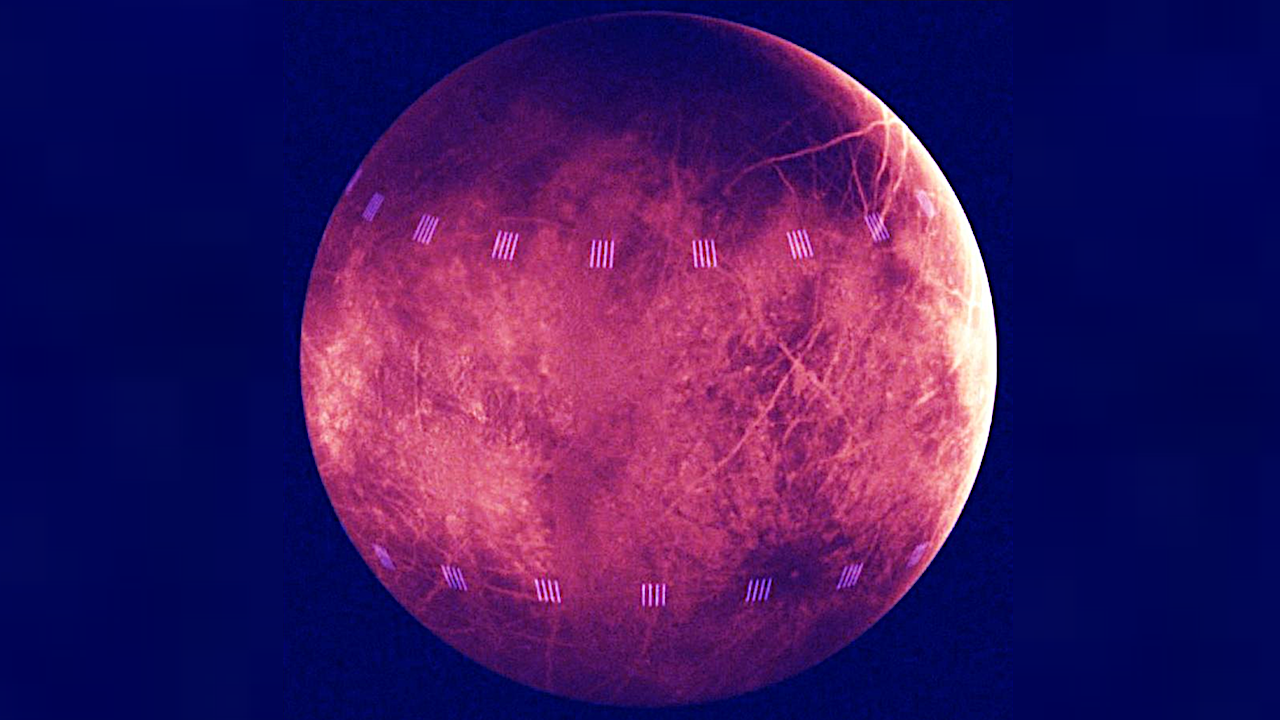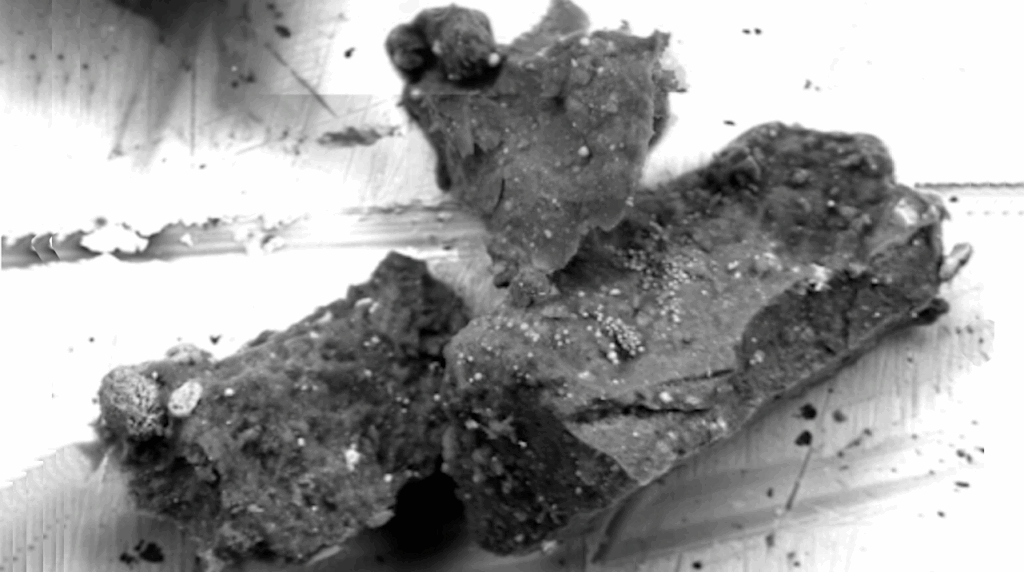Simulated View of Thermal Emissions from Europa

Scientists based this image on a model of data from NASA’s Galileo mission and data from an instrument on NASA’s Cassini mission that studied warm regions of Saturn’s moon Enceladus where jets of water ice and organic chemicals spray out from vents in the icy surface.
Europa Clipper’s Europa Thermal Emission Imaging System, or E-THEMIS, will take both daytime and nighttime observations of Europa. The light pink vertical stripes simulate the warm vents seen on the surface of Enceladus, if they were viewed on Europa in the night.
If Europa has warm spots like Enceladus, E-THEMIS is expected to detect such areas on Europa, even from a distance. Europa Clipper will get as close as 16 miles (25 kilometers) from the moon’s surface, resulting in observations at much higher resolution.
Europa Clipper’s three main science objectives are to determine the thickness of the moon’s icy shell and its interactions with the ocean below, to investigate its composition, and to characterize its geology. The mission’s detailed exploration of Europa will help scientists better understand the astrobiological potential for habitable worlds beyond our planet.
astrobiology








